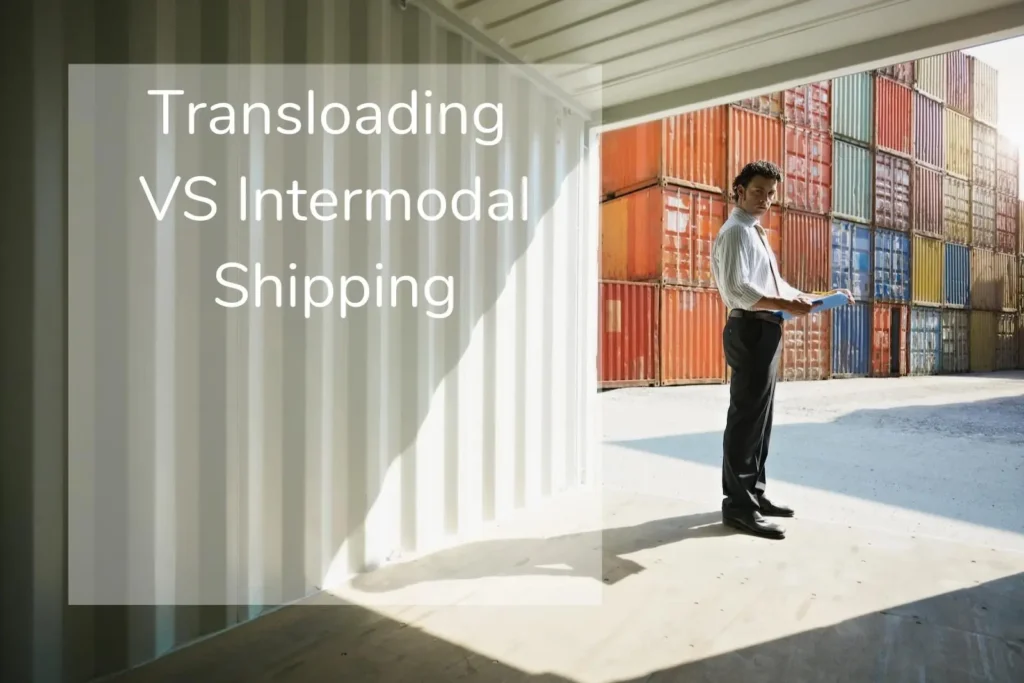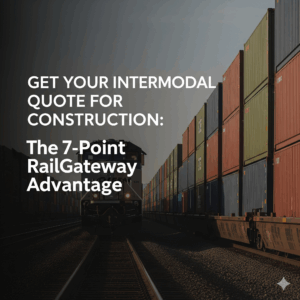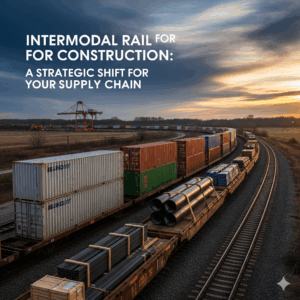This post was last updated on October 2nd, 2023
In today’s fast-paced global economy, efficient and cost-effective transportation of goods is more critical than ever. As businesses strive to optimize their supply chains, understanding the nuances between different shipping methods becomes essential. Two prominent strategies in modern logistics are transloading and intermodal shipping. While both involve the movement of goods using multiple transportation modes, they differ significantly in execution, benefits, and ideal use cases.
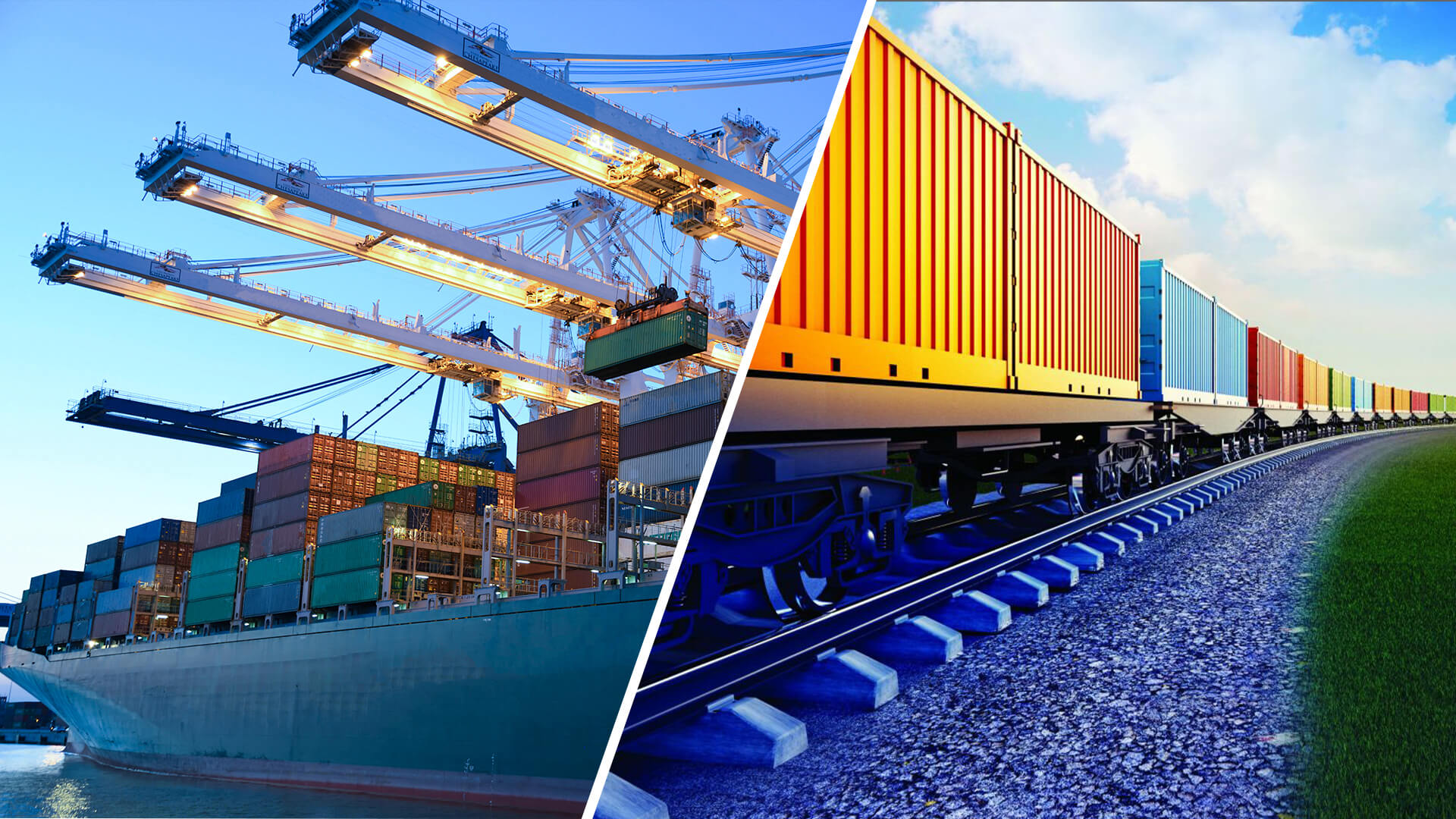
Understanding Trans-loading
Transloading refers to the process of transferring goods from one mode of transportation to another during their journey from origin to destination. This typically involves unloading cargo from a shipping container, railcar, or truck and reloading it onto another mode of transport, such as moving goods from a ship to a truck or from a railcar to a warehouse. Transloading is especially useful when a direct route is unavailable or when combining different transportation methods offers cost or time savings.
Transloading facilities are strategically located near ports, rail terminals, and major highways to facilitate seamless transitions between transportation modes. These facilities are equipped with specialized equipment like cranes, forklifts, and conveyors to handle various types of cargo efficiently. For instance, when shipping freight internationally, cargo might be moved from a ship to a truck or a railcar to reach its final inland destination. This flexibility allows businesses to adapt to changing logistics needs and optimize their supply chains for efficiency and cost-effectiveness.
Exploring Intermodal Shipping
Intermodal shipping involves the transportation of goods using multiple modes of transportation – such as rail, truck, and ship – without handling the freight itself when changing modes. The cargo remains in the same container throughout its journey, which minimizes handling, reduces the risk of damage, and improves security. This method leverages standardized shipping containers that comply with the International Organization for Standardization (ISO), facilitating smooth transfers between different transportation modes.
Intermodal shipping is particularly advantageous for long-distance transportation, where the combination of rail and truck can offer cost savings and environmental benefits. By utilizing rail for the long-haul portion and trucks for the final delivery, businesses can achieve a balance between efficiency and flexibility. This approach is commonly used for cross-border and overseas freight shipments, where containers are transferred seamlessly between ship, rail, and truck at major ports and terminals.
Key Differences Between Trans-loading and Intermodal Shipping
While both transloading and intermodal shipping involve multiple transportation modes, the primary distinction lies in how the cargo is handled:
- Cargo Handling: In trans-loading, goods are physically transferred from one mode of transport to another, often requiring unloading and reloading. In contrast, intermodal shipping keeps the cargo within the same container throughout its journey, eliminating the need for direct handling of the goods.
- Flexibility: Trans-loading offers greater flexibility in handling various types of cargo and adapting to different transportation requirements. It is ideal for shipments that need to be broken down or consolidated during transit. Intermodal shipping, while efficient, relies on standardized containers and may be less adaptable to irregularly shaped or oversized cargo.
- Infrastructure Requirements: Transloading requires specialized facilities equipped to handle the transfer of goods between different transportation modes. Intermodal shipping depends on a network of compatible transportation modes and standardized containers to facilitate seamless transfers.
Choosing the Right Method for Your Logistics Needs
Selecting between transloading and intermodal shipping depends on various factors, including the nature of the cargo, distance, cost considerations, and delivery timelines.
- When to Choose Transloading: If your shipment involves goods that need to be broken down, consolidated, or repackaged during transit, transloading offers the necessary flexibility. It is also beneficial when direct routes are unavailable or when combining different transportation methods can lead to cost or time savings.
- When to Choose Intermodal Shipping: For shipments that can remain in a single container throughout their journey, intermodal shipping provides efficiency, reduced handling, and potential cost savings, especially over long distances. It is particularly suitable for standardized cargo that benefits from minimized handling and enhanced security.

What is transloading?
Transloading is the action of transferring goods from one mode of transportation to another by unloading the cargo and reloading it into a different container, rail car, or truck.
Major rail carriers such as CP and CN in Canada offer many dedicated locations allowing these operations.
What about transloading facilities?
A transload facility specifically handles the transloading process to load and unload cargo out and onto containers, trucks, or rail cars. They are often located near docks, rail yards, or airports.
For a look at CP’s transloading facilities and locations, visit their site here.
CN Rail also has over 31 strategically located distribution centers. Click here to see their interactive map for more details.
What is transloading equipment?
There are particular transloading types of equipment used at transloading facilities that allow the handle of the process quickly, efficiently, and with low human labor involved.
The merchandise is usually palletized and then handled thanks to machines including forklifts, cranes, rail car dumpers, or conveyors, for example.
What type of merchandise can be transloaded?
Transloading can be used for different types of cargo. From bulk goods to nonperishable food or from construction, raw materials to non-regular sized items, many companies can use this method.
Whatever the industry your company is in, the best way to know if you can ship your items is to ask your freight forwarder.
What does the transloading fee cover?
Be aware that a transload fee might be applied to your final shipping invoice if you have to deliver your merchandise to multiple locations.
What does that stand for? This fee will cover the cost of de-consolidating the shipment at a warehouse and reloading them into different trucks sent to various destinations.
What is a typical transloading process?
A typical example of that logistics would be:
Step 1 – Start of the journey
A loaded freight ship, truck, or train arrives at a transloading facility with a specific container full of goods.
Step 2 – Transload of the Merchandise
Thanks to the transloading equipment and the support of handling, the cargo of this container is then unloaded into a storage warehouse and then reloaded into a different transportation mode (which can be a container on a rail car, ship, or truck) or directly transferred.
This would usually be the long-haul step of the shipment. Note that if you are shipping domestically, rail service would be the most economical, reliable, and sustainable option.
If the cargo can be transferred directly to the final destination truck or container, the delivery will be much faster and avoid supply chain delays.
Remember, if the shippers can keep the supply chains moving, the better, cheaper, and safer it is for you as a customer.
Step 3 – The optimal path to reach the final destination
If needed, your goods might have to go through another transloading facility.
The most common path is that the operators have to be moving goods onto trucks for final delivery in order to reach specific and more isolated locations.
Step 4 – The final delivery
The transloading process is complete once the goods reach their destination for the final delivery: customers or distribution center, ready for the market!
Is transloading the same as cross-docking?
Although transloading and cross-docking are similar, transloading services tend to be longer, more customized, and often imply a longer process with more steps.
Whereas a transload facility offers a larger range of services, cross-dock services mainly handle shipments to be directly moved to another truck for final delivery or very short storage.
Merchandise turnover is way quicker and often remains under 24H. Truck drivers have to be ready for their truck to be loaded and to start their journey right away. Great and fast communication is necessary.
Intermodal or Transloading services for your freight shipment?
Now that we’ve defined transloading let’s talk about intermodal shipping and its differences.
What is intermodal shipping?
Intermodal transport refers to the shipment of goods using more than one mode of transportation during the shipping process.
This could mean transporting a product by truck to a train station and then loading it onto a rail car for transport until its final destination.
But one of the main features of this shipping solution is that the load will remain in the same container all the way.
What is the difference between intermodal freight shipping and transloading?
The difference between them lies in how product movement happens at transload facilities:
In transloading, the product is unloaded from one transportation mode and reloaded into another one using a different container.
With intermodal shipping, the cargo will remain in the same intermodal container for the entire trip until it reaches its final destination. It’s the containers themselves that will be moved from one mode of transportation to another.
When to use intermodal or transloading?
Now that you know the difference, it is easier to see when each service would be best for your company’s needs.
If you have a shipment that includes different destinations, transloading might be a better option so that the cargo can be handled more efficiently and overall have more flexibility.
However, a significant disadvantage of transloading is that the container must be opened and the cargo handled and moved. This means the risks of damages, thefts, and delays are also higher.
Intermodal freight shipping can handle almost any type of cargo and is a great solution when you can ship a full container for yourself from one point to another while also being environmentally friendly with fewer emissions into our atmosphere.
Since the cargo will be in the same container, it is also easier to track and manage. Intermodal is the better option if you’re looking for a fast, cheap, and easy shipment solution and your cargo fits into a single container.
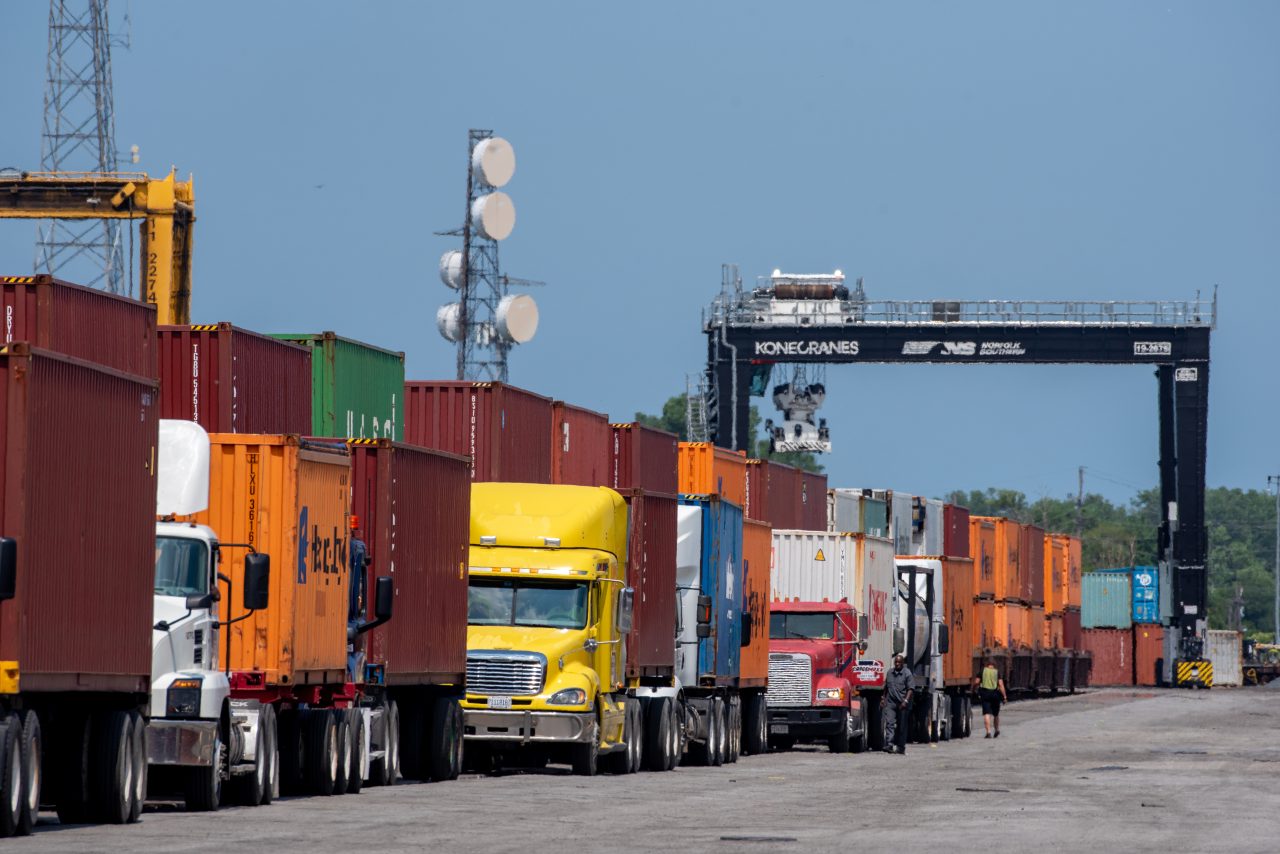
At the end of the day, each case is different, and the best way to handle your shipments will also depend on your type of products, weight, sizes, routes, ports, and much more.
To define the best solution for you, we invite you to contact us. We will be happy to answer your questions and provide you with a quote for your intermodal shipment across Canada and cross border into the US!
Conclusion
Selecting between transloading and intermodal shipping depends on various factors, including the nature of the cargo, distance, cost considerations, and delivery timelines.
- When to Choose Transloading: If your shipment involves goods that need to be broken down, consolidated, or repackaged during transit, transloading offers the necessary flexibility. It is also beneficial when direct routes are unavailable or when combining different transportation methods can lead to cost or time savings.
- When to Choose Intermodal Shipping: For shipments that can remain in a single container throughout their journey, intermodal shipping provides efficiency, reduced handling, and potential cost savings, especially over long distances. It is particularly suitable for standardized cargo that benefits from minimized handling and enhanced security.
In the dynamic landscape of 2025 logistics, understanding the distinctions between transloading and intermodal shipping is pivotal for businesses aiming to optimize their supply chains. Both methods offer unique advantages, and selecting the appropriate strategy can lead to enhanced efficiency, cost savings, and improved customer satisfaction.
Transloading involves transferring goods from one mode of transportation to another, such as from rail to truck, allowing for greater flexibility in reaching destinations not directly accessible by a single mode. This method is particularly beneficial when dealing with complex routes or when shipments require consolidation or deconsolidation. For instance, in regions like Calgary, strategic transloading services have been shown to boost logistics efficiency by leveraging rail for long-distance hauls and trucks for final-mile delivery, resulting in cost savings and improved transit times.
On the other hand, intermodal shipping utilizes standardized containers that remain sealed throughout their journey, moving seamlessly between transportation modes without the need to handle the cargo itself. This approach minimizes handling risks, enhances security, and often leads to cost efficiencies, especially over long distances. Intermodal transportation also supports environmental sustainability by reducing carbon emissions, as rail and sea transport are more fuel-efficient compared to road transport.
When deciding between transloading and intermodal shipping, businesses should consider factors such as the nature of the cargo, destination accessibility, cost implications, and environmental impact. Transloading offers adaptability and is ideal for shipments requiring flexibility, while intermodal shipping provides consistency and is suited for standardized cargo over long distances.
In conclusion, both transloading and intermodal shipping play integral roles in modern logistics. By comprehensively understanding their differences and applications, businesses can make informed decisions that align with their operational goals and customer expectations. Embracing the appropriate shipping strategy not only streamlines the supply chain but also positions companies for success in the evolving logistics landscape of 2025. Contact RailGateway today!
FAQ
1. What is transloading, and how does it work?
Transloading is the process of transferring cargo from one mode of transportation to another during its journey, such as from a railcar to a truck. This method allows for greater flexibility when shipping in areas where direct access via a single mode is limited. Transloading is especially useful in optimizing routes and managing cost-effective freight distribution in 2025.
2. How does intermodal shipping differ from transloading?
Intermodal shipping keeps goods in a single container throughout the journey, using multiple transportation modes like rail, truck, and ship without unloading the cargo. In contrast, transloading involves physically moving goods between vehicles, offering more flexibility for irregular or time-sensitive shipments. The choice between intermodal and transloading depends on shipping distance, cargo type, and logistical goals.
3. Which is more cost-effective: transloading or intermodal shipping?
Both transloading and intermodal shipping can be cost-effective depending on the scenario. Intermodal tends to be cheaper for long-haul freight due to rail savings, while transloading is more economical for complex or regional last-mile deliveries. Businesses often combine both methods for a balanced shipping strategy in Canada and beyond.
4. Is transloading safe for fragile or high-value goods?
Transloading can be safe for fragile or high-value cargo when handled at professional transloading facilities with proper equipment and trained staff. However, because it involves more handling than intermodal shipping, there’s a slightly higher risk if safety protocols aren’t followed. For sensitive freight, businesses may prefer intermodal to minimize cargo movement.
5. Can I use both transloading and intermodal shipping in the same supply chain?
Yes, combining transloading and intermodal shipping is a common practice in modern logistics strategies. Businesses may use intermodal for the main transit leg and apply transloading near the destination for customized distribution. This hybrid approach maximizes flexibility, cost efficiency, and delivery precision—especially in 2025’s increasingly complex shipping landscape.
6. When should I choose transloading over intermodal shipping?
You should choose transloading when your cargo requires flexibility at the transfer point—such as changing container sizes, consolidating or deconsolidating freight, or switching transportation modes near the final destination. Transloading is ideal for businesses shipping to multiple end-points or navigating infrastructure limitations where direct intermodal access isn’t possible. It also enables greater control over last-mile delivery and can reduce costs for regional distribution.
How We Can Help
For businesses looking to optimize their freight shipping with reliable, efficient, and cost-effective solutions, RailGateway.ca is your trusted partner in intermodal logistics. Whether you’re new to freight trains or want to enhance your existing supply chain, our team of intermodal experts is ready to guide you every step of the way.
Contact RailGateway.ca today for a free quote or to speak directly with one of our experienced intermodal specialists. Let us help you unlock smarter, smoother shipping solutions tailored to your unique needs.
Visit RailGateway.ca or call us to get started on transforming your freight shipping strategy in 2025 and beyond.

